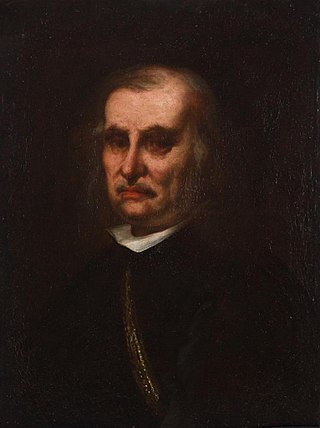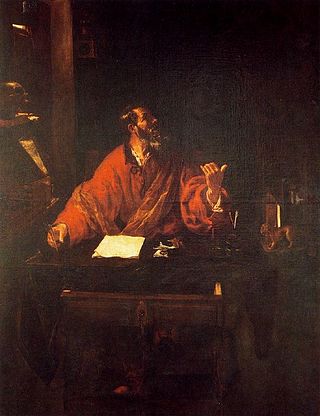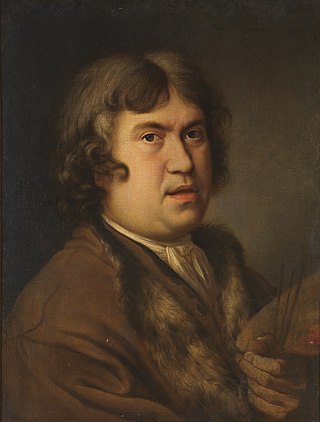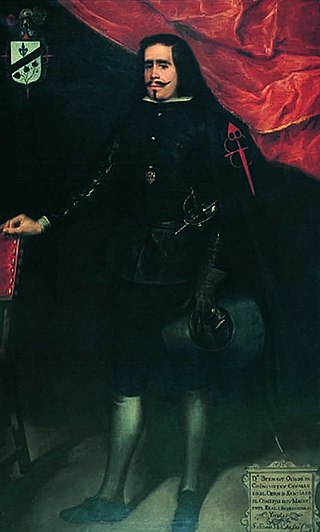
Francisco José de Goya y Lucientes was a Spanish romantic painter and printmaker. He is considered the most important Spanish artist of the late 18th and early 19th centuries. His paintings, drawings, and engravings reflected contemporary historical upheavals and influenced important 19th- and 20th-century painters. Goya is often referred to as the last of the Old Masters and the first of the moderns.

José Victoriano González-Pérez , better known as Juan Gris, was a Spanish painter born in Madrid who lived and worked in France for most of his active period. Closely connected to the innovative artistic genre Cubism, his works are among the movement's most distinctive.

Diego Rodríguez de Silva y Velázquez, Knight of the Order of Santiago was a Spanish painter, the leading artist in the court of King Philip IV of Spain and Portugal, and of the Spanish Golden Age.

Francisco de Zurbarán was a Spanish painter. He is known primarily for his religious paintings depicting monks, nuns, and martyrs, and for his still-lifes. Zurbarán gained the nickname "Spanish Caravaggio", owing to the forceful use of chiaroscuro in which he excelled.

Juan Luna de San Pedro y Novicio Ancheta was a Filipino painter, sculptor and a political activist of the Philippine Revolution during the late 19th century. He became one of the first recognized Philippine artists.

Claudio Coello was a Spanish Baroque painter. Coello is considered the last great Spanish painter of the 17th century.

Vincenzio Carduccio was an Italian painter who spent his career in Spain.

Alonso Sánchez Coello was an Iberian portrait painter of the Spanish and Portuguese Renaissance. He is mainly known for his portrait paintings executed in a style which combines the objectivity of the Flemish tradition with the sensuality of Venetian painting. He was court painter to Philip II.

Vincenzo Camuccini was an Italian painter of Neoclassic histories and religious paintings. He was considered the premier academic painter of his time in Rome.

Gabriel de la Corte was a Spanish painter specializing in the painting of vases, baskets, garlands and signboards, that he had learned to paint without help of any teacher. Although he was a prolific artist he had little success and lived in poverty. In this context Gabriel was selling his works "on account of the necessity", at a very low price, and some of the Madrid painters of that time charged him with the job of helping them in their minor works.

Juan Carreño de Miranda was a Spanish painter of the Baroque period.

Juan Ribalta was a Spanish painter of the Baroque period. He was born and died in Valencia. His father, Francisco Ribalta, was a famous painter, active in the style of Caravaggio. Some sources said he was born in Madrid and later moved to Valencia. His mother Inés Pelayo died in 1601. Juan's works and style are similar to that of his father. He later painted Saint Sebastian at the Valencia Cathedral in 1616, later the small Adoration of the Shepherds and St. Peter, he also painted portraits including the poet Gaspar de Aguilar.

Eugenio Caxés was a Spanish painter of the Baroque period.

Francisco (Francesco) Leonardoni (1654–1711) was an Italian painter of the Baroque period, active mainly in Spain.

Juan de Alfaro y Gámez (1643–1680) was a Spanish painter of the Baroque. He was born at Córdoba. He was first a pupil of Antonio del Castillo, but finished his studies at Madrid under Velázquez, whose manner he followed, particularly in portraits. He was employed by Velazquez in copying the works of Titian, Rubens, and Van Dyck. In the church of the Carmelites is an Incarnation and in the church of the Imperial College at Madrid is his picture of the Guardian Angel.

Charles-Joseph Flipart (1721–1797) was a French painter and engraver.

Francisco Antolínez de Sarabia (1645–1700) was a historical and landscape painter who studied in the school of Murillo, whose style and manner of colouring he followed.
Antonio Castrejon (1625–1690) was a Spanish painter.

Juan García de Miranda (1677–1749), was a Spanish painter of the baroque period, a disciple of Juan Delgado and the uncle of Pedro Rodríguez de Miranda. He was appointed Painter to the King.
Pedro de las Cuevas, a Spanish painter, was born at Madrid in 1568. According to Palomino, he painted several pictures for private collections, for which he was more employed than for public edifices. He gained, however, more celebrity by his academy than by his own works. Some of the most distinguished painters of the time, such as José Leonardo, Antonio Pereda, Antonio Arias, and Juan Carreño, were educated in his school, called the School of Madrid, which was distinguished for its extraordinary and masterly colouring. He died at Madrid in 1635. His stepson, Francisco Camilo was also his pupil.



















